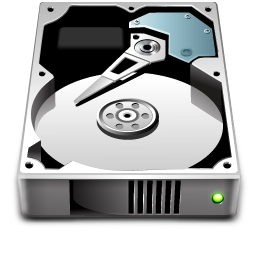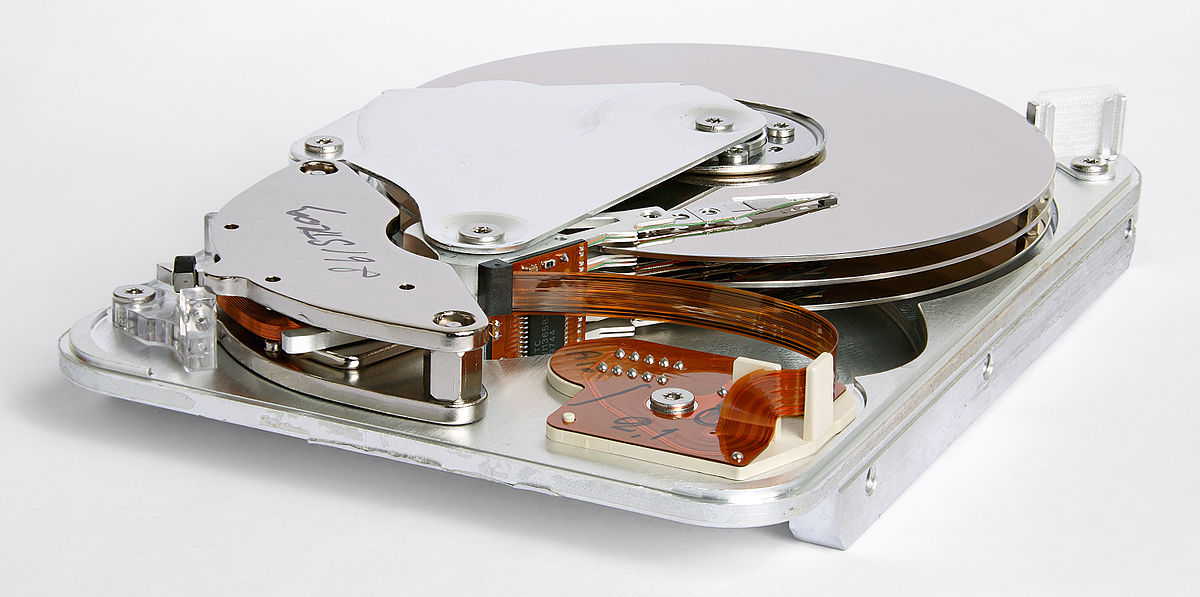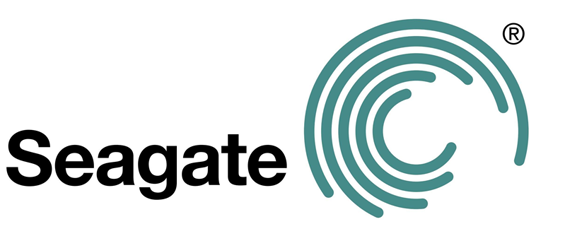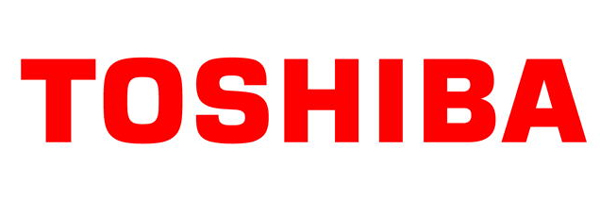Twist-twirl, I want to confuse. Understanding the HDD lines
 Hi, Giktayms!
Hi, Giktayms!Today we have an unusual material, article educational program: we choose the right HDD, depending on the intended use scenarios. The fact is that manufacturers have produced a whole bunch of different lines, and if you do not follow the topic regularly, after a year and a half, you can easily forget which series it belongs to, why you need it and how it differs.
This post would be incomplete without a small theoretical part, so let's get started.
')
HDD device
All hard drives are roughly the same. Inside there are one or more pancakes, driven by a high-speed motor, and a block of reading heads. All this is hidden in an airtight area, where there is no dust. Next to the "mechanics", you can find a few chips and circuit boards, but they are rather related to control electronics than directly to the storage of information.

In this image - an old Seagate from the late 90s. Constructively since then almost nothing has changed. When the disk spins up to the minimum allowable design speed, the control unit displays the head in the working position, and the reading element begins to "float" in fractions of a millimeter above the magnetic surface of pancakes.
At this stage, the number of revolutions per minute for the “pancake” drive may differ, as well as the number of plates on which the information is stored. On a kind of "comb", fixed between the magnetic plates, mounted reading heads. Usually they are twice as large as the plates (although there are exceptions), they all move together. The number of plates themselves almost always directly depends on the volume of the disk, but modern technologies allow us to “push” more and more information per square millimeter, increasing the “density” of information in the most direct sense. Thus, for example, you can find an old 1 TB hard drive with three “pancakes” of 333 GB each, and you can find a new 1.5 TB HDD with two, but 750 each.
Hard drive manufacturers
Four major brands are now represented in our store: Western Digital , Seagate ,
What are the hdd
It would seem that the hard drive and the hard drive, chose the right amount, looked at the price, satisfied - went and bought. Naturally, everything in life is somewhat more complicated. Parameters for hard drives are greater than the "price" and "how much it fit."
The main characteristics of the HDD are:
Capacity - in fact, "how much it fits" - this value characterizes the amount of information that can be written to disk. At the same time, cunning manufacturers use decimal prefixes of the usual metric system: in 1 kilobyte they have 1000 bytes, in megabytes, respectively, a million, in terabyte - a trillion. In the operating system, kilobytes, megabytes, and other units of measurement are multiples of 1024. Because of this seemingly small difference, a decent “error” accumulates, of course, not in our favor: if the beautiful disk label shows a capacity of 1 terabyte , then in practice, approximately 931–932 GB of usable space is available to the user.
Spindle speed - the main characteristic responsible for the speed of the disk when sequentially reading or writing information. The faster the motor rotates, the faster it flies under the head of the pancake sector. The main popular values are 5400, 7200, 10000 and 15000 revolutions per minute, although there are models with intermediate values.
The amount of cache memory - the amount of special high-speed buffer, in which the files are deposited for reading or writing, before the disk or the system performs the previous operation. The larger the amount of cache memory, the easier it is to work with a large number of small files.
The connection interface is a way to connect a hard disk with the rest of the hardware on your computer. The most popular today are SATA 2 (300) and SATA 3 (600) for “internal” drives, and USB 2.0 / 3.0 for “external” drives.
In most cases, the read and write speed, durability of the disk itself, noise levels and power consumption depend on these hardware capabilities. The various combination of these characteristics allows the manufacturer to directly affect the speed and reliability properties of HDD. We are interested in the following indicators:
The number of I / O operations per second ( IOPS ) - in a nutshell - the ability of the hard disk to read and write a certain number of blocks (usually 4 kilobytes) of information per second. More information about this feature can be found in Wikipedia , the information in the article is simply exhaustive. The higher the IOPS value, the faster the disk can perform file operations.
Random access time - that is, the time required for positioning the head of the reading / writing device on an arbitrary section of the magnetic disk. The smaller - the faster the “response” of the hard disk to system requests.
What can HDD be used for?
Nowadays, high-speed SSD drives successfully reclaim the role of system carriers. Despite the high price, rather modest (compared to HDD) capacities and the risk of irretrievable data loss, disks based on microcircuits (and not moving parts) increasingly become carriers of OS and software that is sensitive to the speed of data exchange with the disk. The fact is that their IOPS and random access times are several times higher than those of "classic" hard drives. Fortunately, it is too early to write off time-tested technology. First, in terms of the amount of information stored to the price, a hard disk has almost no equal, and even more so in home use conditions. Secondly, the prices for SSDs were not the most joyful, and now this crisis ... In general, the HDD is still alive and alive. So how can you apply it?
- As a universal disk “for everything”: systems, software, games, data storage;
- As a relatively small disk (from 300 GB to 1 TB) for applications that are sensitive to the speed of data exchange with the disk subsystem;
- As a disk for long-term storage of data that does not represent high value and does not require high access speeds: music, movies, photos, games, backups, and everything that will work equally well on the old hardware, even on the new one;
- Disk for use under torrent downloads. Usually I feel such disks either permanent (almost 24/7) or almost constant loads: something is always written, something is read;
- Disk for long-term storage of important information.
With the first group, everything is clear: for many, there is one disk “under all”; at best, the large disk is divided into 2-3 virtual ones. In some cases (for example, with laptops) nothing can be changed, one disk is one disk, there is neither space nor a connector for the second one. In this case, the disk is required to have "average" indicators in everything.
The second group fights with SSD for the user's attention. On the one hand, there is no possibility for the “classics” to compete with the “hard drives”, on the other hand, even the simplest SSD is 64 gigabytes (enough for the system and the most important software) + the cheapest for HDD data cost more than one high-speed disk comparable volume. Such hard drives require high spindle speed, good IOPS performance, reliable vibration and noise isolation.
To store information that can be obtained again (on the Internet, on another disk), the ratio of price and volume comes out first. The speed characteristics in this case are not so important: even 4k2k video, if you find one, will not forget all the bandwidth of the “slow” HDD.
The disks actively used for file exchange in peer-to-peer networks experience the greatest load: the torrent constantly reads something, writes something, does it in order, often at the same time and at the wrong time. This, in principle, can be attributed, and all sorts of recordings from webcams, especially those that last 24/7. The key characteristic for such loads is durability and elements of HDD mechanics designed for such “hardships”: head drive, engine, spinning pancakes, control electronics.
Stand alone are the storage systems for important data. In fact, the best option to save really important files is to place them in the cloud, create a backup copy, make sure that it is operational and regularly repeat both the diagnostics of the repositories and the backup operations. Of course, in the first place float reliability and reliability of the device.
HDD rulers
We will try to consider all models of hard drives in “similar” conditions - we take the 1 TB model as a basis.
Let's start with Western Digital products. The company gave the families of discs "color" names, coloring the stickers in the appropriate colors.

WD Blue is a universal line of disks in which the balance of both speed and reliability characteristics is respected. The rotational speed is fixed at 7200 rpm, modern disks with a capacity of 1 TB are equipped with 64 megabytes of cache memory. A great option when used as a single hard drive, if your budget is limited. ~ 4,200 rubles and a 1000 (well, almost) gigabyte drive is yours.
WD Green is a series of "eco-friendly" hard drives. They do not set speed records, but are distinguished by low power consumption, while the “pancakes” themselves rotate at a speed of 5400 rpm. Such restrictions have allowed to reduce heat dissipation, and the level of noise and vibrations. We do not recommend putting the system on such a disk, but for storing data that is not demanding to access speed (photos, videos, music, software distribution kits, documents and archives) - that's the point.
Prices start from 4,560 rubles for the 1 TB version, and end up with not quite humane ~ 10,400 rubles for 4 TB.
WD Black - “charged” disks designed for installation of the system, “heavy” software, games. They are distinguished from WD Blue by higher speed characteristics (disks remain within the limits of technically comfortable 7200 revolutions per minute) and improved random access time: all this allows the disk to manage faster with a large number of small files, which is important as when loading the OS and when working under conditions of high loads and constant calls to new batches of data on the HDD. Charges for these characteristics are increased noise and power consumption.
You can buy WD Black for 5,300 rubles (1 TB). In addition, there are also versions for 2, 3 and 4 TB (as well as 320, 500, 750 GB), but their price does not please anyone, and you need to buy disks of the “black” series of such volume with a clear understanding of why it is necessary.
WD Red is a special line of hard drives designed to work in 24/7 conditions and installed in NAS at home or in a small office. WD Red discs are designed for use in network storages. The developers have tried to reduce electricity consumption, increase protection against mechanical damage, vibrations and overheating. Increased safety margin of all disk mechanics. The actual rotation speed is 5400 rpm, however, the manufacturer claims a performance comparable to 7200. In practice, the disks are somewhat slower, but for their scope of application the speed is more than sufficient.
Prices start at ~ 4,800 rubles for a version with 1 TB, the most capacious version, for an impressive 6 TB , costs about nineteen and a half thousand.
WD Purple - special drives for use in video surveillance systems. Western Digital claims a bunch of new and useful algorithms that reduce the chances that the video will be “broken,” even higher than the WD Red vibration resistance. In principle, disks are suitable for home use, but their specificity of work will not allow setting speed records or enjoying silence. Price - from ~ 4 500 per 1 TB.
In addition to the “color” series, WD has three more:
WD SE - designed for office storage systems . These are fast, cold, but noisy disks, designed with regard to office operation "both in the tail and in the mane."
WD RE - for office workstations . High-speed drives for the corporate segment, mainly characterized by the presence of "soft" features and interfaces for administration / management of HDD.
WD VelociRaptor - for those who have little speed. “Velociraptors” are super high-speed HDDs with a rotation speed of 10,000 rpm. The disc is noisy, fast and hot. The price corresponds to the character - 1 terabyte will cost you 12 300 rubles. It is usually used where conventional WD Black is not enough, and there are not enough funds for SSDs comparable in capacity.

Seagate is just as big a player in the market as WD: in fact, they almost equally “bought up” or “combined” other HDD manufacturers.
Seagate Barracuda 7200.14 is the most popular and versatile option. Analogue WD Blue - and the Swiss, and the reaper, and generally a great guy! The disk is quite cold, it differs from 1 TB of competitors in that it has only one “pancake” inside, which is why noise and vibrations are minimized. The rotation speed is 7200 rpm, the cache memory size is 64 MB.
The price starts from ~ 4,300 rubles for 1 TB and ends with an impressive ~ 7,300 for 3 TB.
Seagate HDD.15 - a model designed for storing data that is not critical to the speed of writing / reading. In many ways, an analogue of the WD Green line, but differs by a slightly higher spindle speed: 5900 revolutions per minute versus 5400 for the “greens”.
Unfortunately, we have no price for a terabyte, but there is a price for 4. ~ 10,700 rubles for a quiet and cold disk, which you will get tired of filling up with information - not so much.
Seagate did not bother with high-speed data storage, but for NAS and other heavily loaded disk conditions it is more than enough.
Seagate NAS HDD - here, in fact, the name speaks for itself. The disk is intended for installation in network storages. Cold, quiet, reliable, low-power. The capacity of the disks is from 2 to 4 TB, the prices, respectively, are from ~ 6,700 to ~ 11,750 rubles per piece.
For systems with high loads, streaming of large amounts of data and video surveillance, several models are designed at once:
Seagate SV35 ST1000VX000 , ST2000VM003 , Surveillance HDD ST4000VX000 and Seagate Video 3.5 HDD, ST1000VM002 . The first three models are simply hard drives of enhanced reliability, characterized by an increased resource of moving parts and designed for 24/7 streaming work. The latter is a specialized version for organizing video monitoring systems. In principle, the models are quite usable in “home” conditions as disks for high-load storage of big data, but there is usually no particular need for such monsters at home.
Not forgotten in Seagate and about the corporate segment.
Seagate Constellation CS is a popular series of enhanced reliability disks, arranged in the same way as 7200.14: one terabyte - one “pancake”. The spindle speed is 7200 rpm, 64 megabytes of memory, up to 80,000 hours (a little more than nine years) of the officially declared time between failures. The price of pleasure is from ~ 5 600 rubles for 1 TB and up to ~ 10 200 rubles for 3 TB. Manufacturer's warranty - 3 years.
This model has a “big brother” - the Seagate Constellation ES.3 series . It is characterized by a cache increased to 128 MB and a warranty period extended to 5 years. The difference in price is, but not so significant. 1 TB will cost almost 6,000 rubles, and 4 TB will cost about 15,300 rubles impressive.

Technically, Hitachi Global Storage Technologies was purchased by Western Digital in 2011. Nevertheless, it is 2015 in the yard, and hard drives are still being manufactured and sold, but they are focused primarily on the corporate segment, and the company has changed the brand to HGST.
HGST Ultrastar 7K4000 is a regular hard drive for workstations, the classic 7200 rpm, 64 megabytes of cache memory, and the declared completely crazy 2 million (!) Hours of time between failures. Everything else - a five-year manufacturer's warranty. For a model with 2 TB of memory, you will have to give ~ 8,300 rubles, while for 4 TB - already ~ 15,300 .
The second line, HGST Deskstar NAS - is designed for data storage systems. Available volumes - from 3 to 6 TB, prices - from ~ 8,800 to ~ 20,100 rubles. The disc does not set records for the speed of reading and writing, but has a three-year warranty and stated time between failures of 1,000,000 hours.

Today, Toshiba produces both affordable and simple hard drives, no frills, and special drives for NAS.
The “home” line is represented by a single DT01ACA model, ranging in size from 500 GB to 3 TB. Disks are often put into computers for which it’s just important that there is an HDD, with which there will be no problems. The whole series is very quiet, it does not heat up, and the price can not but rejoice ~ 4,000 rubles for 1 TB and "only" ~ 7,500 for 3 TB.
The NAS series disk, MC04ACA , has decent performance - 7200 revolutions per minute, 128 megabytes of cache, up to 800,000 hours of time between failures. The price of 2 TB starts from ~ 7 950 rubles, the maximum volume, 4 TB, will cost about 13 700 rubles.
Results
We have prepared a convenient table, according to which you can navigate the variety of HDDs produced today, send it to a comrade who pesters you with questions about what to buy, or just to save - suddenly it comes in handy. This information, of course, is not complete or true in the last instance, but using such a table is easier than remembering what color disks are needed for.
| Purpose: | Western digital | Seagate | Hgst | Toshiba |
| Universal disk, the only HDD in the system | Wd blue | Barracuda | Missing | DT01 ACA |
| Storage of large amounts of information, not critical to the speed of reading / writing | WD Green | Desktop HDD.15 | Missing | DT01 ACA |
| Work under constant loads (file sharing, torrents, backup, NAS) | Wd red | NAS HDD | HSGT Deskstar NAS | MC04 ACA |
| Video surveillance systems, video archives | Wd purple | Surveillance HDD , Seagate Video 3.5 HDD | Missing | Missing |
| High speed drives for workstations | Wd black | Seagate Constellation CS | Missing | Missing |
| Corporate segment drives, enhanced reliability drives | Wd re | Seagate Constellation ES.3 | HGST Ultrastar 7K4000 | Missing |
| Office NAS and Server Storage Disks | WD SE | Missing | HSGT Deskstar NAS | Missing |
» ASUS Transformer Pad
» Razer Kraken headsets
» Midland GXT-1050 Radio Stations
» NVIDIA SHIELD Game Console
» Testing AA-size Ni-MH batteries
» Sony Smartwatch 3
» Transformer Lenovo Yoga 2 Pro
» LEGO Mindstorms EV3
UPD: thanks to the commentators for valuable comments, all edits made to the post.
Source: https://habr.com/ru/post/376183/
All Articles